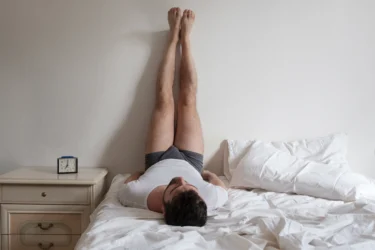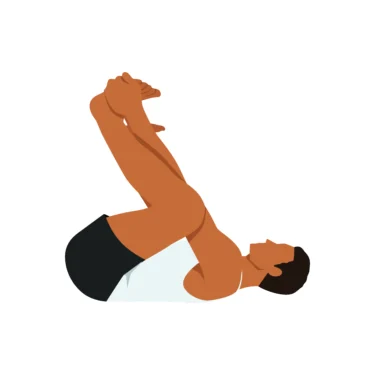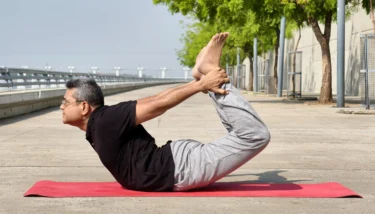Exercises To Do If You Suffer From Varicocele
By Dr. Bikram K Mohanty +2 more

Get,

to manage your symptom
Get your,


4 Cr+ families
benefitted

OTP sent to 9988776655



You’ve successfully subscribed to receive
doctor-approved tips on
Whatsapp

Get ready to feel your best.

Hi There,
Download the PharmEasy App now!!


Register to Avail the Offer
Send OTPBy continuing, you agree with our Privacy Policy and Terms and Conditions

Hi There,
Sign up on PharmEasy now!!
Trusted by 4 crore+ families

OTP sent to 9988776655



You have unlocked 25% off on medicines




Code: NU25
By Dr. Bikram K Mohanty +2 more
Table of Contents
Varicocele occurs when there is an enlargement in the veins of the scrotum, which is a thin pouch of skin that holds the testicles. These veins normally carry oxygen-poor blood from the testicles back to the heart. However, in varicoceles, the blood collects in the veins instead of flowing out properly, similar to varicose veins. Varicoceles often develop during puberty and may gradually worsen with time. Although they may cause discomfort and pain, symptoms may not be noticeable initially. Over time, varicoceles may affect the growth of the testicles, reduce sperm production, and may be linked to a higher risk of infertility. Symptoms of varicocele include:
If you experience any of these symptoms, you need to consult with your doctor as soon as you can. A timely and accurate diagnosis is important so that it does not cause any serious health problems later. The doctor may suggest surgery or recommend a few helpful exercises for your condition.

Regular movement and gentle exercise of the calf muscles may help provide temporary relief from varicocele-related discomfort. This is because physical activity helps improve blood circulation and reduces the risk of blood pooling in the veins. Aim to move regularly throughout the day and try to gently exercise both calf muscles every hour to support better blood flow. Maintaining a physically active routine is important for managing varicocele symptoms and overall health.
Did you know?
Here are some exercises that may help improve circulation and relieve the discomfort caused by varicocele:

This exercise boosts blood circulation and is great for alleviating the pain and discomfort of varicocele. You must begin by sitting right next to a wall, lying down in a comfortable position, and slowly lifting your legs on the wall. Maintain an angle of 90-120 degrees between your body and legs3,4.
You may rest your arms at your sides and breathe regularly. Hold this position for at least 5 minutes and repeat it every day. This is a very easy yoga posture that may help improve testosterone production.

This is a very simple exercise that can be done in the comfort of your home. It promotes better blood circulation and stretches both the inner groin and pelvic regions, thereby temporarily easing the pain associated with varicoceles. It also supports better blood drainage from the testicles. First, lay on your back, bend your knees, and bring them to your chest. Try to hold your feet with your hands. Now, slowly try to draw your legs downwards while maintaining a flat position with your back against the ground, and continue doing this until you feel a mild stretch. Maintain the position for about 1 minute. Do this exercise regularly for positive results5.

The regular practice of Dhanurasana may be involved in stimulating male reproductive organs and smoothening blood circulation across the entire body. It has several physical benefits, while also relieving stress and anxiety. Start by first lying down flat on your stomach while keeping your feet slightly apart and your arms at your sides. Next, raise your legs behind you and hold your ankles behind your back. Then, while inhaling, attempt to slowly raise your legs and chest away from the ground. Once you get in a comfortable position, breathe deeply and maintain the pose for about half a minute or less3,6.

Start by kneeling with both knees on the floor. You can use a yoga mat for added comfort. Keep your ankles and knees together and sit down on your heels. Make sure you sit straight with your buttocks resting on your heels. Meanwhile, your thighs should be resting on your calves as the big toes of both feet touch each other. Place your hands on top of your knees, keep your arms relaxed, head straight, and chin parallel to the ground. Focus on your breathing as you slowly inhale and exhale air. Hold in this pose for about 5 or 10 minutes and gradually increase the time to around 30 minutes per day7. This exercise has several benefits, including strengthening the sexual organs and pelvic muscles and alleviating varicocele pain. Vajrasana also promotes blood flow to the pelvic area, keeping the varicocele from worsening.

Walking at a regular pace every day has several health benefits, particularly for varicocele, as it helps improve blood circulation. Since poor blood circulation is thought to be the main cause of varicocele, regular walks can, to some extent, reduce the chance of developing them in the first place. Walking may also help ease the swelling and pain in the scrotum.
Along with the exercises given above, breathing exercises can help you feel relaxed, reduce stress, and provide relief from varicocele symptoms3. Make sure you consult a doctor before performing these exercises. It is important to perform yoga poses correctly and let your doctor know if you have any health conditions as all exercises may not be ideal for people with orthopedic issues, back pain, joint pain, and others.
Varicoceles are very common, don’t usually cause any complications and do not usually require any treatment unless they make a person very uncomfortable or if they cause clinical infertility.
Dr. Ashish Bajaj, MBBS, MD in Clinical Pharmacology and Toxicology
While exercising can be very beneficial for your condition, you should avoid straining your body too much as it may aggravate the pain and inflammation. Strenuous physical activity may affect fertility in individuals with varicocele, as suggested by a research study involving athletes with this condition8. Avoid lifting weights as it increases the pressure on the veins in your legs, which can make your condition worse. You must also avoid doing squats and lunges as they add strain and excessive running is not recommended if you have varicocele. Use caution and speak with a doctor if you are planning to perform any exercises for varicocele.
Some believe that Kegel exercises can help in alleviating the symptoms of varicocele. These are easy-to-do pelvic exercises that, when done consistently, can improve and restore muscle tone and blood flow. They are thought to relieve issues like incontinence and varicoceles.
Dr. M.G. Kartheeka, MBBS, MD (Pediatrics)
Varicocele can be quite concerning as it may cause discomfort and affect your daily life. While some self-care measures may offer temporary relief, in certain cases, medical procedures such as surgery might be necessary. Regular exercise may help improve circulation and reduce discomfort, but it is important to speak with your doctor first to understand which exercises are safe for you and to explore suitable treatment options.
Also Read: 7 Best Exercises to Lose Weight at Home
Untreated varicoceles may cause fertility issues, low sperm quality or count, and affect your sexual life2,9.
Exercise can temporarily ease the pain of varicocele if you already have it. However, avoid strenuous exercise as it can aggravate varicocele symptoms.
The main self-care measures for varicocele include regular exercise, avoiding standing for long hours, maintaining your digestive health, and wearing comfortable underwear that offers testicular support, but is not too tight as it may restrict blood flow1.
Disclaimer: The information provided here is for educational/awareness purposes only and is not intended to be a substitute for medical treatment by a healthcare professional and should not be relied upon to diagnose or treat any medical condition. The reader should consult a registered medical practitioner to determine the appropriateness of the information and before consuming any medication. PharmEasy does not provide any guarantee or warranty (express or implied) regarding the accuracy, adequacy, completeness, legality, reliability or usefulness of the information; and disclaims any liability arising thereof.
Comments

Leave your comment...
You may also like
Comments